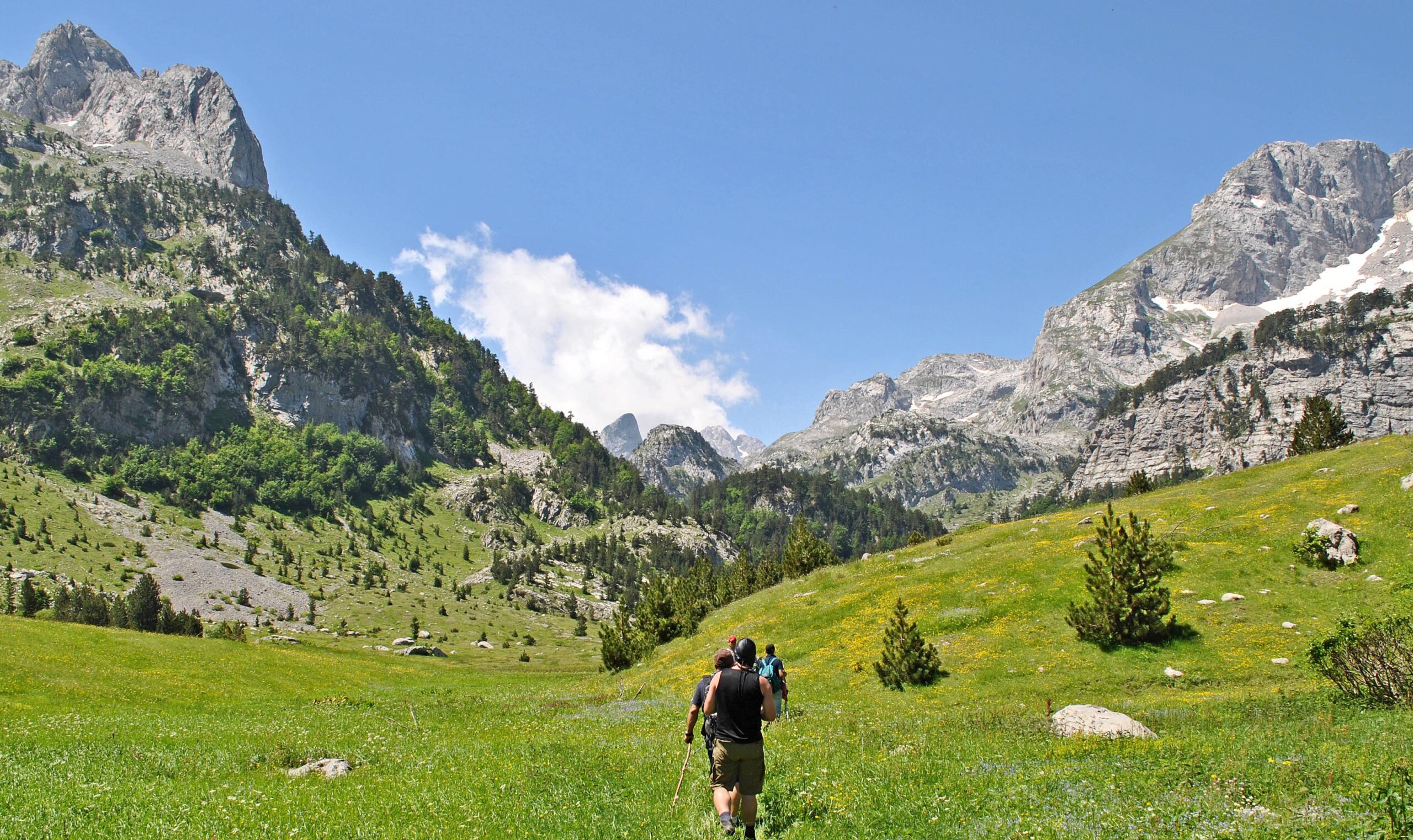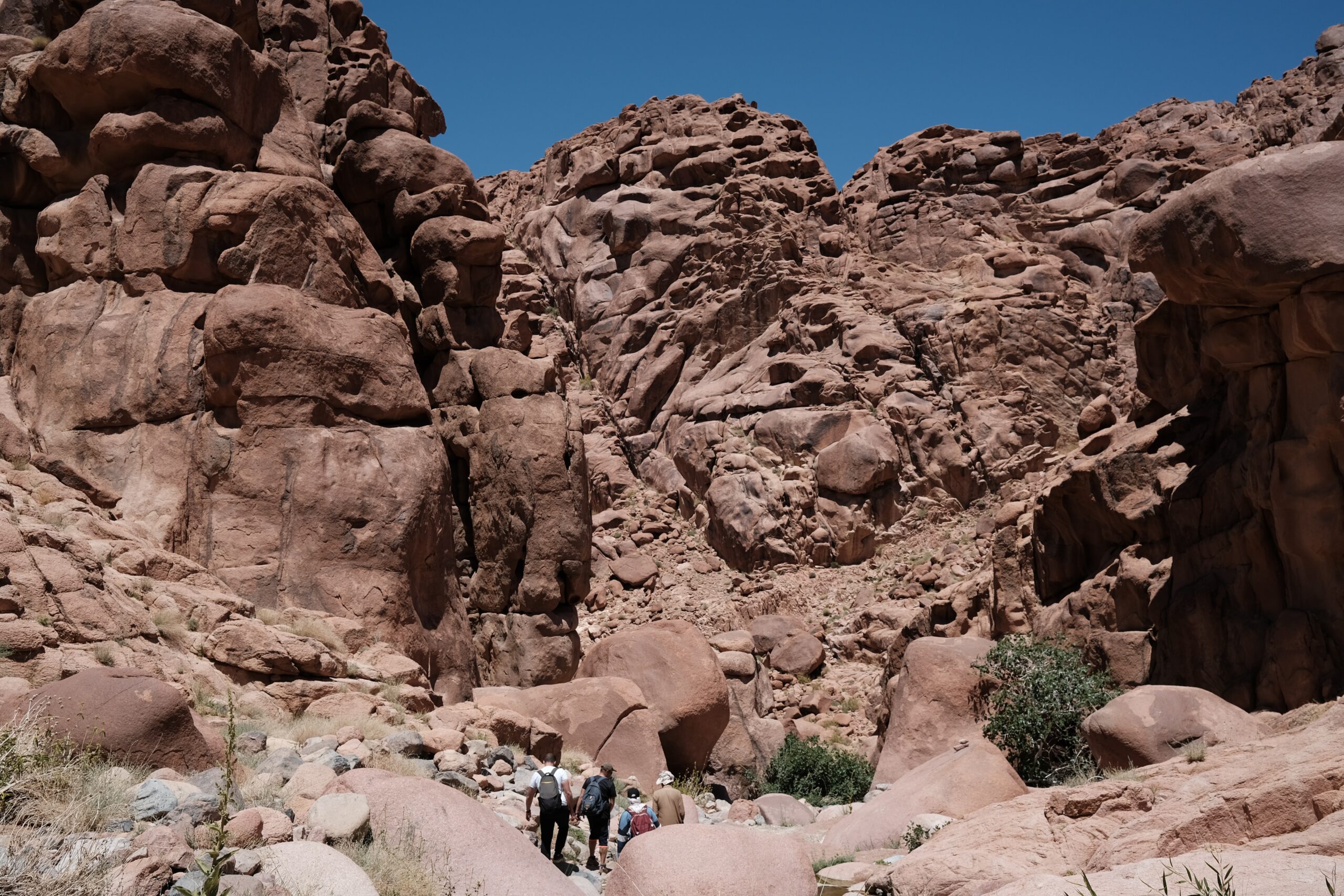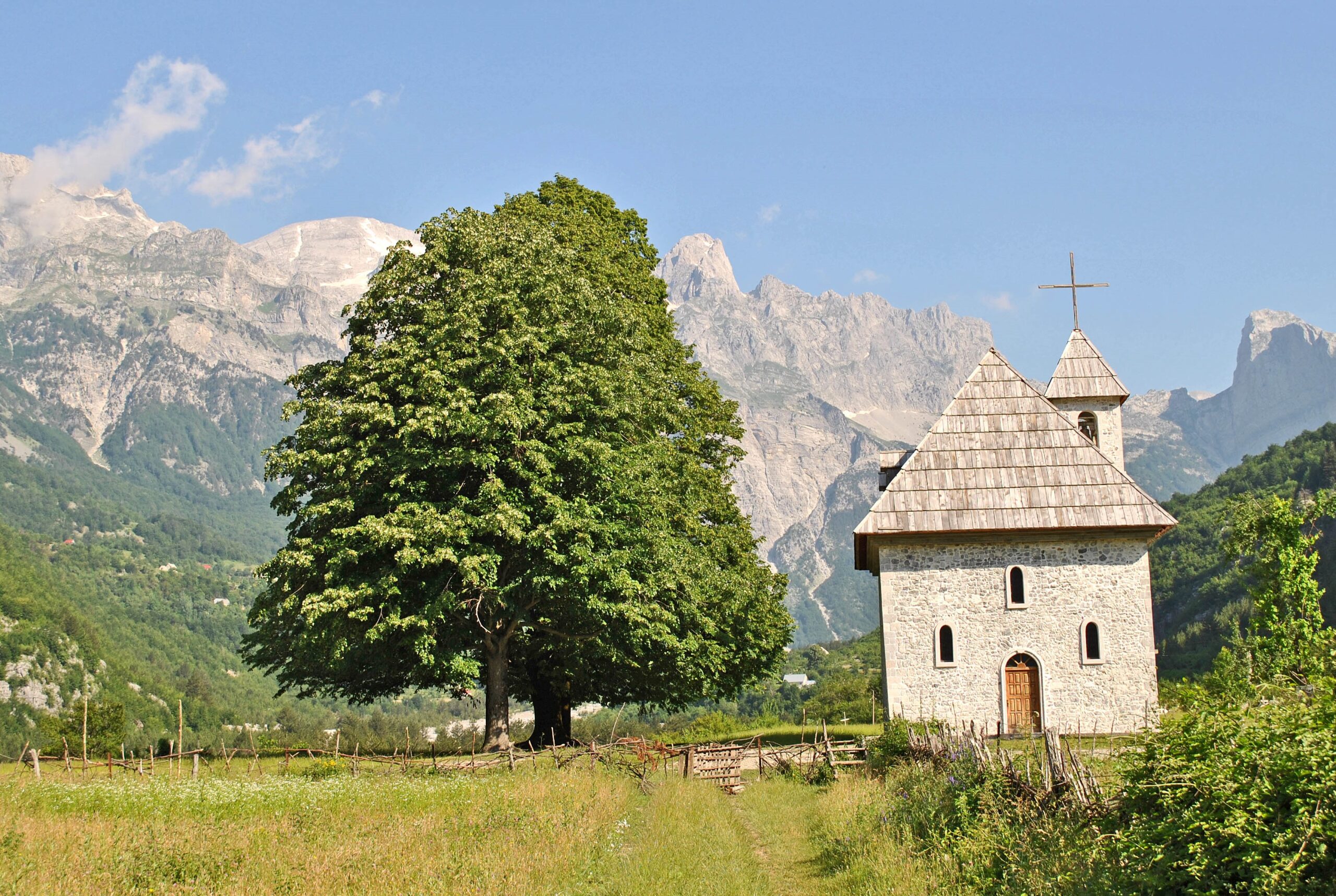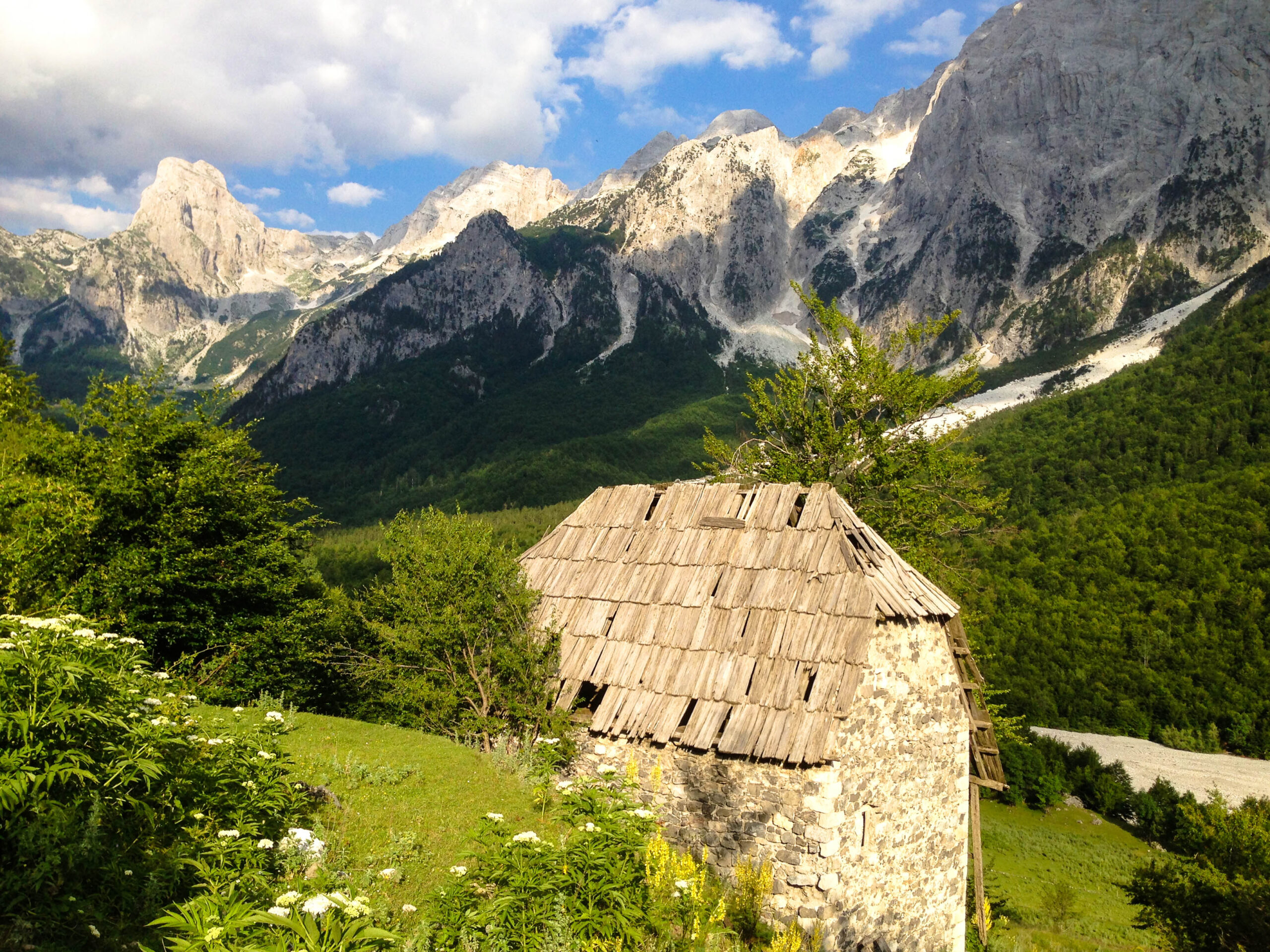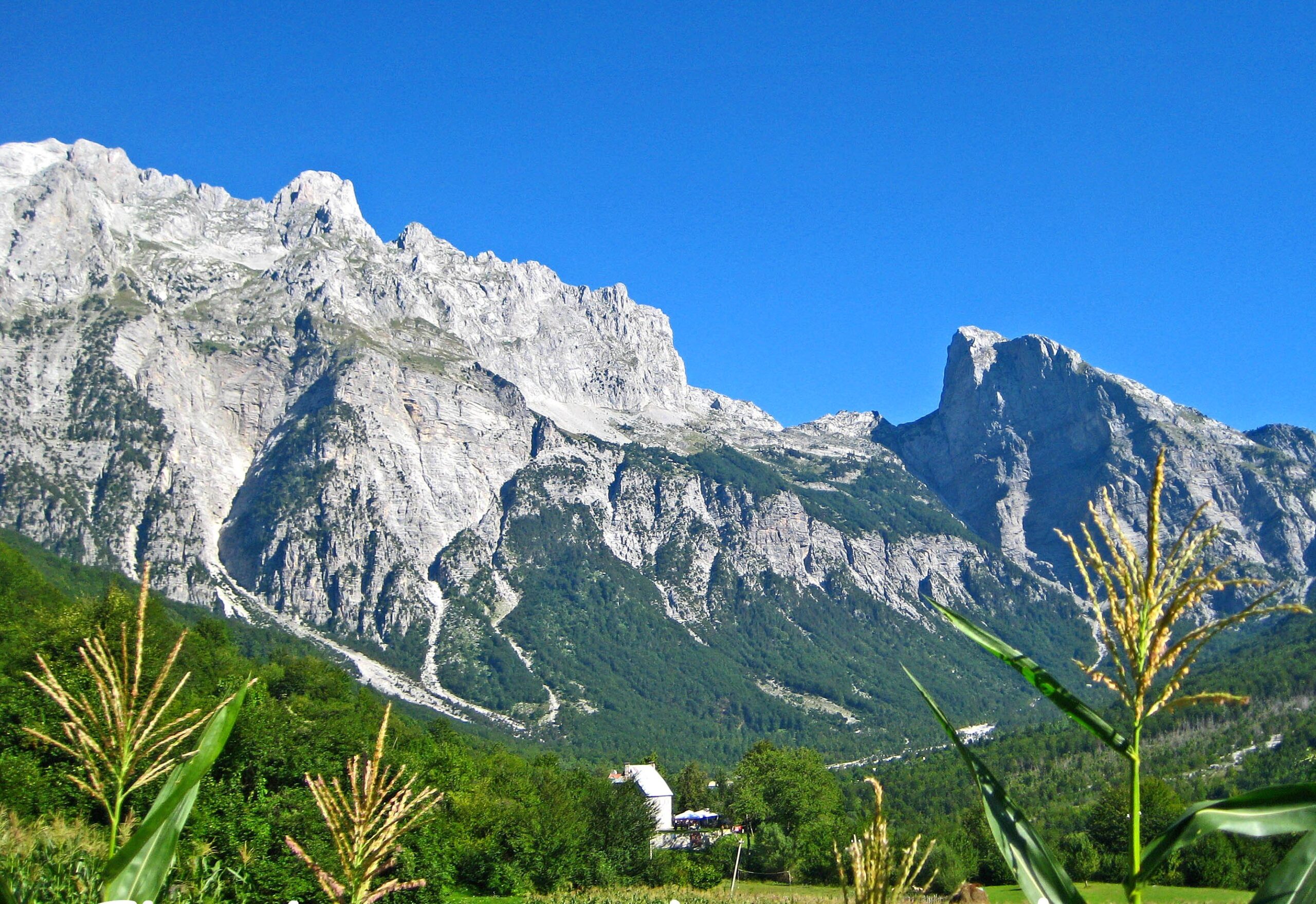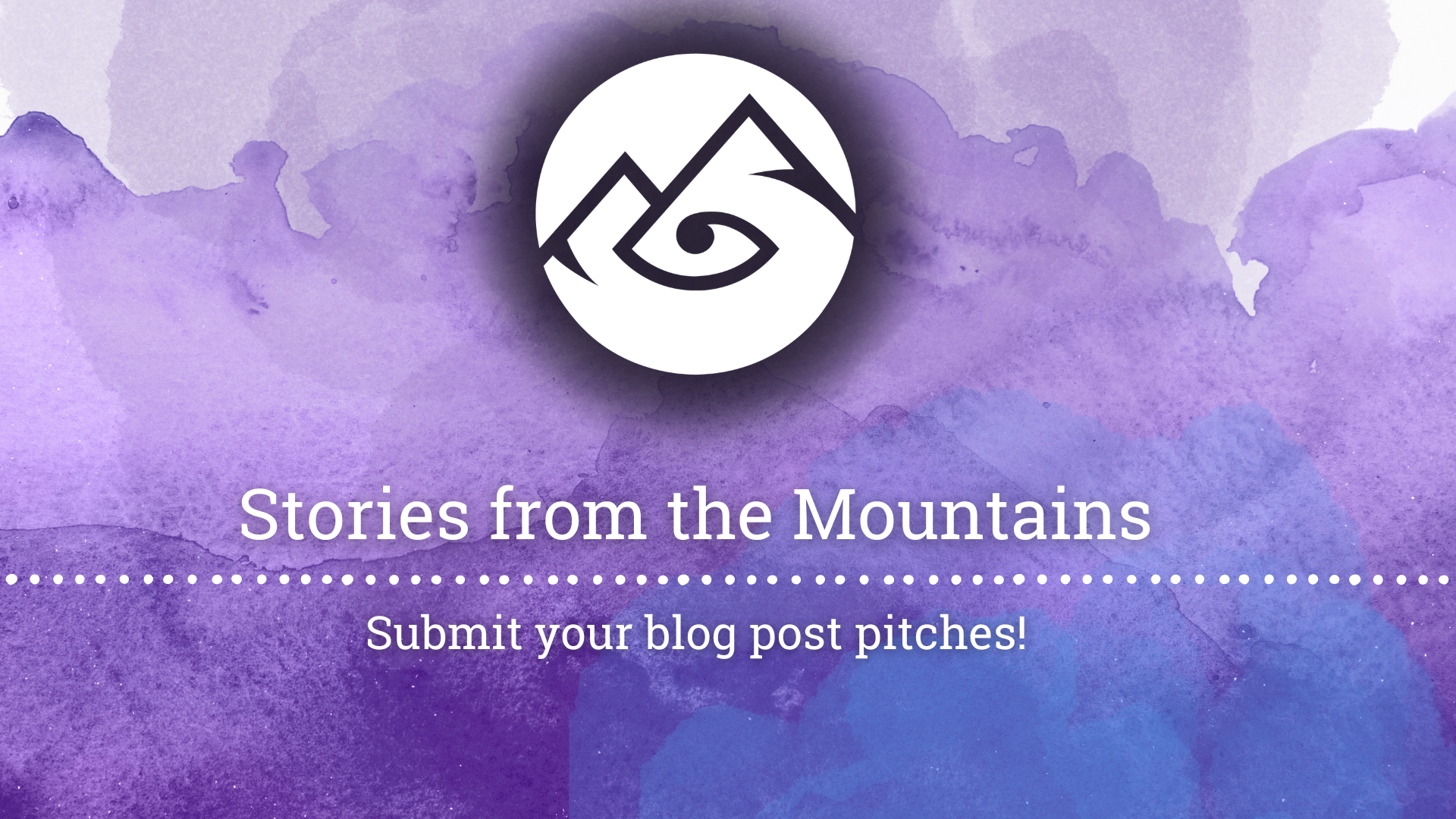By Katie Mitchell | Thru-Hiking
Katie is a people professional – inspiring, pushing, questioning, and building. And with over a decade of experience working with people in the adventure space, she’s ready to help you begin checking off that bucket list. Katie was previously the communications manager of Mountain Sentinels and is now the Community Manager of Thru-Hiking.
Long-distance trails have been popular in the United States for decades, popularized by the Pacific Crest Trail, Appalachian Trail, and the Continental Divide Trail. But long-distance thru-hikes like these also exist in many countries around the world. Recently, they’ve been popping up as ways to boost tourism economies in remote areas, specifically, mountainous areas. This post will focus on two thru-hikes that are gaining popularity among adventure-tourists: the Sinai Trail, which traverses 550 kilometers across Egypt, and the Peaks of the Balkans Trail, which journeys 192 kilometers through the Accursed Mountains of Kosovo, Albania, and Montenegro.
Sinai Trail
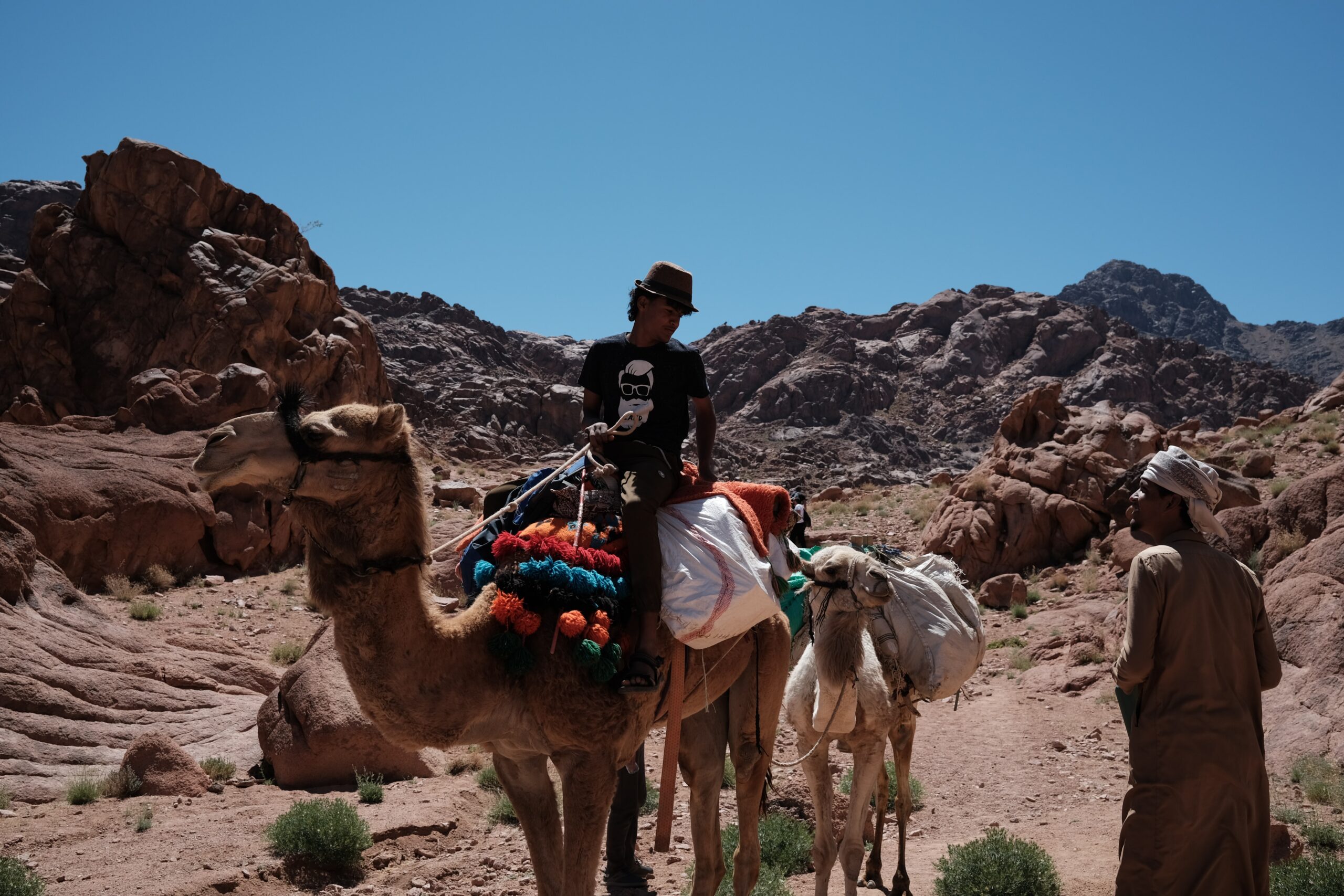 The Sinai Trail is Egypt’s first long-distance trail, and was launched in 2015. The trail’s foundation has consisted of the Bedouin Tribe since its conception. But in 2017, the trail was revamped and they increased the paths to their current total length of 550 kilometers and to involve eight Bedouin tribes: Tarabin, Muzeina, Jebeleya, Awlad Said, Gararsha, Sowalha, Hamada and Alegat. The trail is estimated to take approximately 54 days to complete.
The Sinai Trail is Egypt’s first long-distance trail, and was launched in 2015. The trail’s foundation has consisted of the Bedouin Tribe since its conception. But in 2017, the trail was revamped and they increased the paths to their current total length of 550 kilometers and to involve eight Bedouin tribes: Tarabin, Muzeina, Jebeleya, Awlad Said, Gararsha, Sowalha, Hamada and Alegat. The trail is estimated to take approximately 54 days to complete.
The Bedouin tribes involved in the trail began it as an effort to support their communities through rough times. As climate change wreaks havoc on the lifestyles and food of the regions, it has consequently changed the economy. So, the goal was to create jobs, bring in liveable wages for the people living on the trail, and to save the endangered Bedouin heritage. As of now, the trail foundation employs roughly 50 people as guides, cameleers, and cooks.
Aside from helping the local economy, the Sinai trail has brought greater visibility to the rapidly increasing impacts of climate change affecting the region. The tribes list this as one of their primary reasons for actively pursuing the growth of this attraction. On the trail’s website, they write that, “Bedouin knowledge of the Sinai’s old ways, water sources, place names, legends, tribal history and culture is critically endangered in the modern era…The Sinai Trail ensures it is passed between young and old as it always has been, keeping it alive.” These guides take hikers through rugged mountains, rolling sand dunes, and historic sites that tell the story of one of the world’s most ancient civilizations. You can learn more about hiking the Sinai Trail here.
Most of the information the tribes publish about the trail supports the trail’s potential to help the environment. Faraj Mahmoud, a community leader of the Jebeleya tribe & a founder of the Sinai Trail, said in a recent video that, “Nature won’t come to you. You must go to nature. And you must care about it. Caring about it means looking after every part of it. Never forget that plants & living things feel much more than you can imagine.”
Peaks of the Balkans Trail
The Peaks of the Balkans Trail is a 192 kilometer trail that loops between Kosovo, Albania, and Montenegro. The trail was formed in 2013 by two local outdoor operators in Albania with the cooperation of the German organizations GIZ and DAV.
I spoke with Ricardo Fahrig, one of the trail’s initial founders and the product manager at Zbulo, an Albanian tour group, about the opening of the path. He provided a picture of how the trail brought a sense of hope for locals. Many had experienced the atrocities of the 1900s: the end of communism, the fall of Yugoslavia, civil unrest in 1997, and the Kosovo War in 1999. So, the possibility of tourism in the region “kindled a sense of hope and pride.” But it also required an adjustment from the new hosts. “Initially, locals struggled accepting money for the hospitality they provided. The Kanun, an ancient highland law code, had shaped customs and was considered shameful to ask visitors for compensation. The entrepreneurial [residents] realized what was happening and adapted fast, thus were born the first money-hungry sharks.”
Virtyt Morina, who works with the Peaks of the Balkans Foundation, also chimed in with information about the collaboration of locals with the trail. He told us that the foundation requests hosts to carry on with local traditions and to serve local food when it is possible. They also encourage hosts to care for the surrounding nature as an act of preservation while hosting the adventurers.
These guesthouses have also upgraded their amenities from basic offerings: a radio, bucket shower, bare lightbulbs, to luxury in the mountains. Most guesthouses now offer ensuite rooms, water boilers, fridges and freezers and endless electricity. The trail has drastically changed the lives of stakeholders, those historically estranged from development, in the region.
While the trail has brought jobs and prosperity to the communities, Fahrig says the mass tourism on the trail has created more problems than they’re able to solve. He listed examples of excessive waste water, garbage, and the need for low-quality food in the region to feed the many new mouths. He ended by stating, “We consider the PoB both our greatest success and failure. While it makes a huge difference to local communities, the trail is also becoming a victim of its own success and risks losing its original character.”
I noticed these issues in my own experience hiking the trail in August 2022. In order to find a place to sleep, we needed to book our accommodations over a month in advance, and sometimes were still unsuccessful and needed to knock on doors when we arrived to each township. There are a few tourism companies that bring hikers en mass to the trail, which means there is congestion on the path and a high demand for resources from local people to provide for groups of up to 60 tourists at once. And while this was frustrating to witness, I also saw the luxuries it afforded local stakeholders – and the new ease with which they can live. Although, of course, the best part of the trail was at the end of some evenings when we would sit down with our hosts and review their family’s history with the trail and they would impart advice to us as we trekked onward.
Long-distance trails have become increasingly popular in the past few years, especially with the intensive outdoor recreation push that’s boomed since COVID-19. But, like with all tourism, these trails must be approached with caution for the communities. Researching the ethics of the trail, potential alternatives for overcrowded areas, and how to positively impact the people is imperative to sustaining these trails for years to come.
Tips for Sustainable Hiking
- Research the potential trail and talk with stakeholders about the history of the space. When do they recommend hiking? Do they recommend going elsewhere to even out the traffic in the region?
- Leave no trace. This may not be your home, but it is someone else’s! Pack out all of your waste and leave the trail better than you found it.
- Stay on trail. The land is not yours, and the trail was created in that space for a reason. Even if bushwhacking feels like a more efficient way to reach your destination, it can lead to a degradation of the environment.
- Be intentional about your interactions with local folks. What can you do to make their lives easier? If you have communicated with them beforehand, I recommend asking about the best practices for guests. Is it customary to bring a gift? To stay up with the family? To wake up early and leave without interacting? These are all things to consider.
- Learn some of the local language. While English is widely spoken, it’s still better to learn how to have a polite interactions in the local language. In the case of the Peaks of the Balkans, we needed to learn two sets of phrases, but it was worth it!
If you are interested in further information with regard to these trails, check out the links below!
Sinai Trail: https://sinaitrail.net/
Bedouin talk: https://www.facebook.com/sinaitrail/videos/1451831358656684/?app=fbl
Peaks of the Balkans: https://peaksofthebalkans.com/
Zbulo!: https://www.zbulo.org/
This piece is a part of the Stories from the Mountains series. This is an opportunity to have a published work disseminated to our international audience of Mountain scholars, stakeholders, and community members while retaining full ownership of the writing. The piece will be edited collaboratively between you and our communications team to ensure clear, expressive, and interesting work for all audiences. Modest compensation will be considered depending on the type and length of the piece, and pending final approval and publication on the Mountain Sentinels blog.

